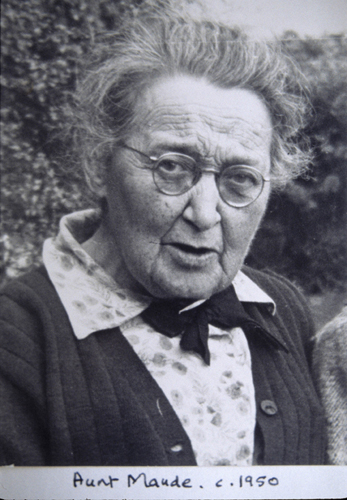 |
| Maude Delap. Jellyfish Goddess of the North Atlantic |
 |
| Maude collecting with two of her sisters on Valentia Island. |
Maude Delap was a naturalist's naturalist. Born in 1866, she was the 5th of 10 children, all interested in the natural world. When she was 8 years old, her father (a reverend) moved the family to Valentia Island- a point in County Kerry off the extreme South West end of Ireland. Always interested in the marine environment, her collecting was boosted by a visit to Valentia from E.T. Browne and other investigators from the Plymouth research station in England. Delap was mentored by Browne (who was actually a bit younger than her but formally trained) and continued her work with jellyfish long after he left Valentia.
And, her work was fruitful. Because Delap did something that Browne and other marine investigators could only dream of: she successfully raised jellyfish through larval into medusae forms in a home aquarium!
I'm sure you're not as excited by this as you should be (or I am). This could come from two points of confusion:
1. what are the forms of medusae?
2. why is it important that she did this?
Jellyfish, which scientists commonly refer to as medusae, are the free swimming sexually mature part of the life cycle. We see jellyfish and we think, oh- that's what a jellyfish looks like. But have you ever thought about what a baby jellyfish looks like? It doesn't look like an adult form at all, in fact- it has it's own name!
This illustration is the lifecycle of obelia jellyfish. The tree-like organism on the left side of diagram is called a polyp (this is probably a group of polyps formed asexually by strobilation). The polyps eventually release free swimming medusae, which need to grow to mature size. So why does this life cycle matter and why does Maude matter?
Because you can catch a medusa, a planula, and you can also find a hydroid. You can collect them from the sea and plunk them into an aquarium. And chances are- you might get the medusa to produce eggs and sperm to create a planula. You might even get a planula to metamorphoze into a hydroid. And you might get a hydroid to release a tiny medusa. But, you're not likely to get all of these. Cultivating medusae through their whole lifecycle is super super hard. It's a finnicky beast. It likes its water just so (and that changes from season to season). It likes its food just so (and that changes depending on what part of the life cycle its in).
Between 1899 and 1900, Maude Delap did it. And she did it awesomely. On June 21, 1899 she picked up an injured Chrysaora Isosceles off the beach. She took it home and put it into her tank, and by the next day, she found planula free floating. They attached themselves to the tankside and were kept as small hydroids throughout the winter. While many believed that invertebrates feed primarily on copepods and plankton, Delap found that in this stage, they preferred feeding on the panula of other jellyfish, especially sarsia. By spring, she had small medusae and by May they reached full adult size with 24 tentacles. Unfortunately, the weather turned foul and Delap was unable to keep providing her beauties with their preferred food (including small fishes- something else the scientific community doubted jellyfish ate). They lost weight and eventually died.
Delap's work is still cited in major laboratory manuals on how to raise jellyfish. It's clearly written, and Delap states very clearly why she made the choices she did, the temperature and placement of her aquarium, her feeding strategies, and every other aspect of her work that would allow someone to copy it for future experiments. Published in The Irish Naturalist in 1901, it is so awesome.
Dorothy Cross, an artist, produced some artwork inspired by Delap in 2001. Below, find a link to her artwork and an awesome interview about Maude Delap's work from the BBC's Woman Hour:
Dorothy Cross | Artists' stories | Artists talking | a-n
http://www.bbc.co.uk/radio4/womanshour/2001_40_thu_02.shtml
Maude Delap just changed the tenor of my chapter. Eureka!

I'm so pleased you discovered Maude, and that she has helped your research. I can't help thinking she would be pleased.
ReplyDeleteCoincidentally, it's her birthday tomorrow! Dec 7th (1888) Maude was one of several women we featured in a book about Irish women scientists some years ago, and which I edited for WITS http://url.ie/ge9i
I was just searching for a link to use in a tweet about her tomorrow, and found your blog.
Best wishes for the research.
Mary Mulvihill